#prehistoric human diversity
Explore tagged Tumblr posts
Text
youtube
The Relationship Between The Last Modern Humans and Neanderthals
Journey back 47,000 years to witness the surprising romance between Neanderthals and early humans.
#Neanderthal-human interbreeding#ancient DNA analysis#human migration patterns#evolutionary genetics#archaic hominin hybridization#paleogenomics#human ancestry#prehistoric population dynamics#genetic admixture#Out of Africa theory#Neanderthal genome#modern human origins#ancient human fossils#genetic legacy#human evolution timeline#prehistoric human diversity#genomic studies#archaeological evidence#natural selection#genetic variants#Youtube
0 notes
Note
how well do the Tim Haines documentaries (walking with dinosaurs, prehistoric beasts, etc) hold up today?
"additionally, is there anything that the Time Haines documentaries get wrong that we knew was wrong then but they just put in anyway for some reason?"
There is *so much* in the walking with series that is wrong, both at the time of making and today. In fact, this is practically a dissertation level analysis required.
The biggest things:
they did not feather their dinosaurs. they should have. yes, even in 1999.
their tyrannosaurus model is a joke
Utahraptor SHOULD NOT BE IN EUROPE tf
torosaurus? a rare ceratopsian? instead of triceratops? you're just being needlessly edgy
Unholy Mammal Bias Batman
Humans did not become bipedal because of grass. We spread across Africa because of grass, but we were bipedal before then
oh yeah, Grass evolved in the Cretaceous after all
The Maastrichtian wasn't a "dying world". there was a slight decrease in megafaunal diversity. This happens all the time, and dinosaurs had bounced back from such a dip before. This is also very North America centric - other continents had no such dips. Nonavian dinosaurs would not have gone extinct without the asteroid.
they skip the paleocene and are extremely lopsided in how they present the Cenozoic
Walking with monsters is somehow the best paleozoic documentary that currently exists and also represents the paleozoic TERRIBLY
408 notes
·
View notes
Text
Round 1 - Phylum Rotifera




(Sources - 1, 2, own work, 4)
Rotifera is a phylum of microscopic and near-microscopic animals, commonly called Wheel Animals or Wheel Animalcules. Many are an important part of freshwater zooplankton.
Rotifers are common in freshwater throughout the world, with a few marine species. They range from 50 micrometres to over 2 millimeters, though most are around 0.1 to 0.5 mm long. Boasting a large amount of diversity, some rotifers are free-swimming, others move by inchworming along the ground, some are sessile and live inside tubes of gelatin attached to the substrate, and some live in sessile or planktonic colonies (seen in gif below). Rotifers are great little recyclers, feeding on detritus, dead bacteria, algae, and protozoans, eating particles up to 10 micrometres in size. They are also prey for many animals, including copepods, fish, bryozoans, comb jellies, true jellies, starfish, and tardigrades. Their fossils have been found in Devonian and Permian fossil beds.
Rotifers are sexually dimorphic, with females always being larger than males, if males of the species even exist at all. Male rotifers’ main lot in life is reproduction: they do not usually have a functional digestive system, and many are already sexually fertile at birth. The female has one or two ovaries, and releases eggs through a cloaca. Male rotifers have a penis which they either insert into the female’s cloaca, or use to inject sperm straight through her skin. Most species hatch as miniature versions of the adult. Females grow rapidly, reaching their adult size within a few days, while many males do not grow at all. Their lifespan lasts from a few days to a few weeks.
This poll also includes the parasitic Acanthocephala (4th image), or “Thorny/Spiny-headed Worms” which was once considered to be a discrete phylum but have since been found to be highly modifed rotifers, so I am including them in this phylum. Acanthocephalans have complex life cycles, involving many hosts.

Propaganda under the cut:
If you’ve ever done freshwater microscopy you’ve probably seen one of these little guys.
Rotifers are a major food source for many species and also contribute to the decomposition of organic matter in soil.
Because they’re so good at recycling detritus, rotifers are sometimes used in fish tanks to help clean the water.
One species, Cephalodella vittata, only lives in Russia’s giant Lake Baikal.
In 2021, biologists were able to restore bdelloid rotifers that had been frozen for 24,000 years in Siberian permafrost!
Some acanthocephalans cause acanthocephaliasis in humans. The earliest known infection was found in a prehistoric man in Utah, dated to around 160 BC.
49 notes
·
View notes
Text
Worldbuilding: Architectural influences in The Lord of the Rings
Writers: In your worldbuilding, you needn't invent every single detail and style of your setting - that's pretty much impossible. Even the worldbuilding master JRR Tolkien borrowed heavily from human art, history, architecture, and style.

The elves get to live in gorgeous surroundings built into and reflecting nature.



So Lothlorien and Rivendell use the Art Nouveau style.
Meanwhile, the dwarves live underground amid their beloved stone:



Carved in the Art Deco style.
Humans use a broader diversity of architectural styles, as here on our own Earth:

Minas Tirith is built in Middle-Ages European architecture styles (largely Germanic?).

And Edoras in the old Norse designs.
And so on. Can't say what Mordor's architectural influence is, beyond prehistoric horror setting - thoughts?
If Tolkien could borrow so heavily and still be considered a brilliant creator of a unique and beloved world, you sure can, too.
(PS: What's your favorite LotR architecture, and why? How have you borrowed from historical art and artifacts for your own worldbuilding?)
#worldbuilding#writing tips#the lord of the rings#architecture#art deco#art nouveau#fantasy settings#jrr tolkien
49 notes
·
View notes
Text
Cybertronic Wildlife Notes #1:
Cybertronian Snakes & Cyber-Vipers
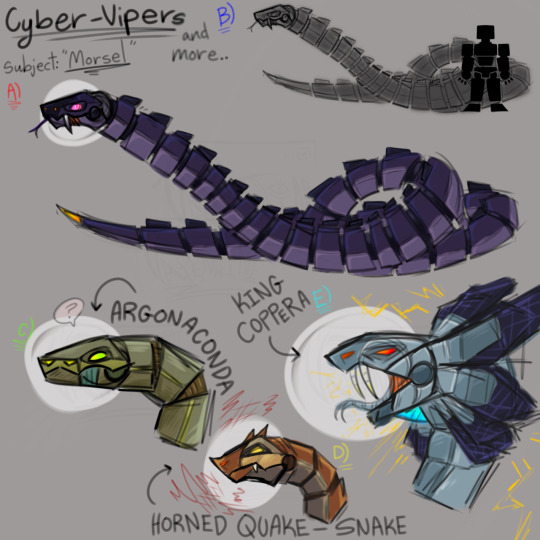
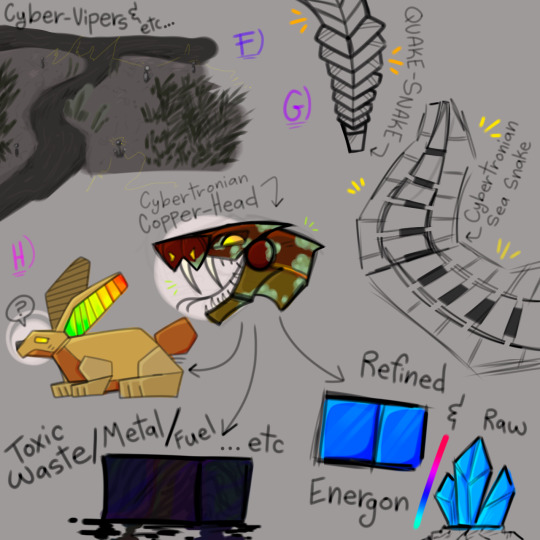
If anybody's interested on my random info blurb and mostly what each letter is informative to, just check the "read below" :)
I'm very interested in cybertronian wildlife and its fauna/flora, I'm deeply upset they didn't go into it anymore than what was shown in TF:One, so I'm tossing my own coins into the well here at this rate.
Notes & Details: A) The following subject dedicated to the examination is dubbed, "Morsel", (a cyber-viper owned by Hightop, my other tf oc) a cyber-viper that's been obtained from an underground trading ring for all things "exotic" from living cybertronic wildlife, to valuable resources and materials that require under-the-table methods of obtaining. Morsel is, as the notes proceed, a "cyber-viper", one of the following fauna found upon Cybertron, classified amongst cyber-snakes and cybertronian-reptilians in general. Depending on the cyber-snake you come into contact with, they can be equipped with a multitude of different naturally-forged arsenal of weaponries, ranging from needle-like teeth, powerful muscular bodies and tails, strong hinges located along their jaw to open at around 180 degrees or more, and etc… Depending on the species that's being encountered. They bare a rather decent-level of intelligence (equivalent to an earth cat), and are equipped with very sensitive olfactory sensors and occasionally "pits" that light up, their forked tongues also operate in the same manner, having been used to seek out prey. Their optical receptors also take upon a scope of thermal vision.
Cyber-Vipers in particular are special, mainly because they have a very diverse range of venom, with effects often coming as a result of what they consume.
B) Like most creatures on Cybertron, some cyber-snakes can become just as big as a cybertronians, occasionally dwarfing them in size and only becoming as small as a youngling or a mini-con. Their size may vary from species to species and often coordinate with their designated prey, with some having already grown accustomed to consuming larger cybertronic fauna whereas others may find complacency in consuming smaller ones. Most come as large as they are in order to tackle for stockier prey or bigger prey, but they do eventually cease to a particular limit--only due to lack of resources to absorb and consume , and other factors (think of it like lobsters actually). But for the most part, the biggest cybertronian snake ever recorded have now gone prehistoric and are presumed extinct, assumed to have gone out during the Great Cataclysm or otherwise reduced in size… Or perhaps they are lying dormant elsewhere, surviving somehow, having yet to be found and remain as survivors of such a devastating extinction event.
C) Argonaconda are among the many species of cybertronian snakes among the planet, often found in cybertron's jungles, magnetic marshes, and any damp or moist locations. They're known for their large size and are considered amongst the largest out of many cybertronic serpents, having been sized to about three to four average adult cybertronians when reared and positioned to strike (… As a result of dscovering this, we are now at a loss of one bot). They can be quite intimidating, but, when not in dire need of refueling. They can be quite passive and will leave most alone when it in itself isn't disturbed, often seen swimming within oil rivers or lounging about in tree canopies. Some have been seen also basking upon rocks before after a large meal, assumably with the heat and rays given, the heat helps it digest better and simmer down whatever contents remain in its tanks (perhaps internal solar-paneling mechanics?)
(average sized cybertronians, if I'm considering the height of both human eqivalent and based on tfo…. like 50 feet, so to a human this would probably be like jormungandr or something 😭)
D) Horned Quake-Snakes! One of the more venomous and among the most variants of cybertronian snakes (remember venom needs to be punctured into you from the outside for you to die and, poison is when you put it inside by consuming it to die). Quake-Snakes closely share similar appearances to that of their Earth counterparts (Rattle-Snakes), but with the main fact that Quake-Snakes, when moving their tails, often run their tails against the ground in more of a kind of up and down quick wagging motion, which occasionally cause occasionally small tremors to surround in order to intimidate potential predators. They're a little smaller than the average cybertronian and roughly can be seen to hang around the height of near a bot's hip-plate, but don't let their height fool you. These creatures can pack quite the potent venom in their bites, and are often found in cybertronian deserts or dryer regions of cybertron. Sometimes they will even bury underground during the nighttime to adjoin to an entire nest among others of their kind to keep warm.
E) King Coppera! One of the most dangerous and among the larger cybertronian serpents! These highly conductive and electricity-resistant, King Coppera are actually equipped with solar-panel plating that run along their frills/hoods. They use their solar-paneling hoods to not only intimidate enemies but to charge up intense amount of electricity in their bites before lunging and charging a lethal dose of their concentrated electricity into any unfortunate victim, sending many offline immediately from the intense sensation. They are occasionally and rarely found at the foot of mountains, or in regions of Cybertron where lightning storms are frequent. (personal fun fact: while making this, I was inspired by the slitherfang from horizon forbidden west in relations to the design!)
F) Magnetic Marshes! Not the most prettiest place on Cybertron, but it's occasionally home to a couple cybertronian serpents, like Argonacondas and some cyber-vipers. Some cybertronic serpents love to swim amongst the oil-rivers and can sometimes be seen hiding in them while slithering after prey who decide to evacuate and try to wade through the liquid. Thanks to their more sleeker and flexible forms, cybertronian snakes are more easily capable of swimming through the material than most without much resistance. Some cybertronian snakes, as apart of their diet, even linger around to consume naturally grown electric nodes that come and grow within these Magnetic Marshes. It's a nutritious and valuable resource that makes their diets more diverse and for some small and venomous cyber-snakes, it helps to consume some if their venom revolves around emitting paralysis upon entry into the system of any prey they find.
G) Many cybertronian-snakes have various and particularly designed tails that function with a particular purpose, whether it's for defense, offense, even movement, method of mimicry of prey, or some other. The possibilities are endless. Supposedly, some have been rumored to be able to hypnotize bots with their tail too or certain prey.
H) Cybertronian serpents, especially ones that live as long as they do, have a very diverse diet, even if their main source of energy comes from consuming live prey. For conveniency, most cybertronian snakes will often consume to other matter and material that surround their environment, mainly coming from cybertronian flora, fungi, certain minerals, raw or refined energon, even scrap metal. Every species has a particular energy source they resort to in order to cater to their designs and purpose, with some species, like the cyber-viper, being able to consume a wide-variety of toxic material in order to provide and make up a venom that helps them defend themselves from larger predators or hunt prey. The more "carnivorous" and aggressive variety of cybertronian snakes like the king coppera often come in lesser quantity and are more rare to encounter as a result due to their strict diets. The more flexible the diet can be, the more certain species will become more common and will be able to thrive in various environments. Which is why most "passive" or "neutral" species of cybertronian-snakes can often be found more frequently. With some cybertronian snakes having very sensitive forked tongues, they also bare merit to strong taste-buds of sorts, so in some aspect. Some may even have particular preferences to what they like to consume.
#transformers#maccadam#macaddam#concept art#transformers wildlife#cybertronian wildlife#worldbuilding#cyber-vipers#Morsel (oc)#tf oc#cybertronic wildlife#cybertronian#snakes#my art#devils-yui#Pat's Stuff#tf
23 notes
·
View notes
Text
We should also consider if the inhabitants of the mega-sites consciously managed their ecosystem to avoid large-scale deforestation... Archaeological studies of their economy suggest a pattern of small-scale gardening, often taking place within the bounds of the settlement, combined with the keeping of livestock, cultivation of orchards, and a wide spectrum of hunting and foraging activities. The diversity is actually remarkable, as is its sustainability. As well as wheat, barley, and pulses, the citizens' plant diet included apples, pears, cherries, sloes, acorns, hazelnuts and apricots. Mega-site dwellers were hunters of red deer, roe deer, and wild boar as well as farmers and foresters. It was 'play farming' on a grand scale: an urban populous supporting itself through small-scale cultivation and herding, combined with an extraordinary array of wild foods. This way of life was by no means 'simple'. As well as managing orchards, gardens, livestock and woodlands, the inhabitants of these cities imported salt in bulk from springs in the eastern Carpathians and the Black Sea littoral. Flint extraction by the ton took place in the Dniestr valley, furnishing material for tools. A household potting industry flourished, its products considered among the finest ceramics of the prehistoric world; and regular supplies of copper flowed in from the Balkans. There is no firm consensus from archaeologists about what sort of social arrangements all this required, but most would agree the logistical challenges were daunting. A surplus was definitely produced, and with it ample potential for some to seize control of the stocks and supplies, to lord it over others or battle for the spoils; but over the eight centuries we find little evidence for warfare or the rise of social elites.
a description of talianki (located in modern day ukraine), a neolithic site from 5,700 years ago (inhabited from roughly 4100 to 3300 bc) from the dawn of everything by davids: graeber and wengrow
once again this book is fantastic - and one of its main theses is that "the agricultural revolution" and some of the conclusions we draw from it are, largely, not true.
the development of farming in human societies is a much much longer and more "playful" process than popular narratives would have us believe. 'agricultural revolution' suggests an on/off switch almost. and the way it's usually taught sees agriculture being "invented" and then spreading like wildfire to take over the globe - only then allowing for true cities and the "necessary evils" they entail. this simply isn't true. an urban, farming society is not automatically doomed to bureaucracy, inequality, and exploitation.
all across the world the archaeological evidence points to the domestication of plants taking literal thousands of years longer than it "ought to." and then, even when the domestication of a wild plant was complete there isn't an immediate rise of huge fields and class stratification (as the popular narrative goes). again - in the magnitude of multiple thousands of years. we have generations upon generations of humans with farming know-how who don't immediately begin a march of politics and inequality precipitated by farming.
agriculture isn't humanity's curse no matter what the memes and capitalists say. we are not doomed to our current ways - we can imagine, we can build, we can create new ways of being. the past is the present is the past. and fuck you capitalism and doomed "human nature" debates. and read the dawn of everything <3
#eezordalf's wisdom#anthropology#david graeber#david wengrow#books#history#wizardblr#wizardposting#the dawn of everything#talianki#ukraine#archaeology#neolithic#prehistory#studying my tomes#humanity i love you#the human condition#human experience
216 notes
·
View notes
Text
A couple of years ago i designed some alien creatures. I'm still very proud of them.


(04/21)
Obviously inspired by dinosaurs and other prehistoric animals with some fun twists. Hard cranium forming "helmets" with a lot of diversity, eyes under the mouth, and breathing holes on their neck.
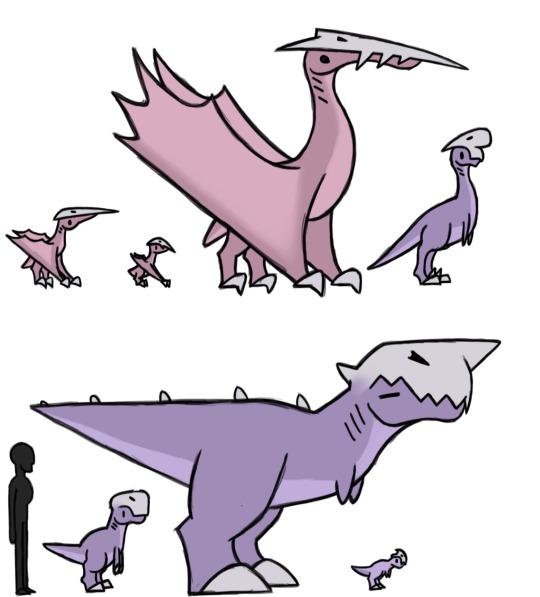

Here are some therapod and pteranosaur inspired carnivores, and some herbivores inspired by dinos and mammals.
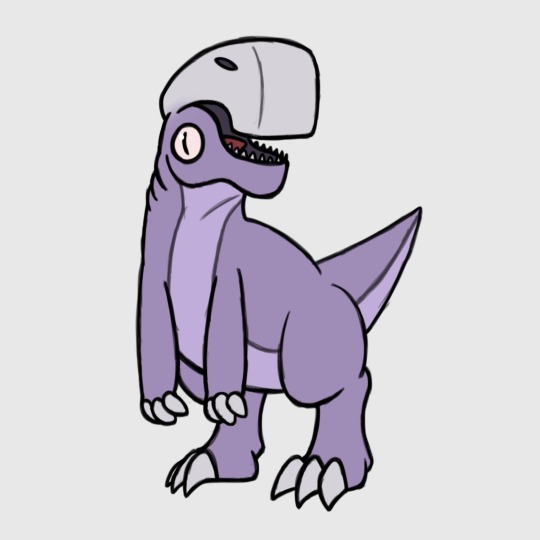

The main guy has an intelligence comparable to that of the first hominids, they have a rudimentary language and can use tools. Who knows, maybe in a few (millions) years they'll be as smart as humans!
Sadly the Milky Federation has allowed a sort of Safari-Jurassic Park on their planet that is severly halting the natural development of its biodiversity.
#science fiction#character design#alien design#alien oc#alien#creature design#original species#speculative biology#dinosaur#dinosaur alien#milkyfederation
82 notes
·
View notes
Text
Deep dives into folklore: stone henge

Stonehenge, the iconic prehistoric monument standing on the Salisbury Plain in England, has captivated the human imagination for centuries. This deep dive essay embarks on an exploration of the folklore surrounding Stonehenge and the myriad theories proposed to unravel the enigmatic origins of this ancient structure.
I. Folklore and Mythic Narratives:
Stonehenge's folklore is rich with mythic narratives that span centuries and cultures. In Arthurian legend, Merlin is said to have transported the stones from Ireland and arranged them as a monument of healing. The Welsh tale of the Giant's Dance attributes the creation of Stonehenge to giants who brought the massive stones from Africa. These folklore elements intertwine with the cultural fabric of the British Isles, weaving a tapestry of fantastical tales around the monument.
II. Astronomical Alignments: A Cosmic Connection
One prevailing theory suggests that Stonehenge served as an astronomical observatory, aligning with celestial events such as the solstices and equinoxes. The configuration of the stones appears to have been deliberately positioned to mark the movements of the sun and moon. This theory posits that Stonehenge was a sophisticated calendar or ceremonial site, reflecting the profound importance of celestial cycles in the spiritual and cultural practices of its builders.
III. Rituals and Ceremonial Functions:
Another theory proposes that Stonehenge functioned as a sacred space for rituals and ceremonies. The alignment of the stones with celestial events may have served a dual purpose, allowing the ancient builders to not only mark time but also create a sacred arena for religious observances. The presence of burial mounds in the vicinity suggests that Stonehenge may have been a site for funerary rituals, honoring ancestors and aligning with the cycles of life and death.
IV. Social and Cultural Hub:
Some scholars propose that Stonehenge served as a social and cultural hub, drawing people from distant regions for communal activities and trade. The sheer effort required to transport the massive stones over long distances suggests a collaborative and organized effort. Stonehenge may have functioned as a meeting place where diverse communities gathered for seasonal festivals, trade exchanges, or important cultural events.
V. Symbolic and Metaphysical Interpretations:
Stonehenge's enduring mystery has also fueled more esoteric and metaphysical interpretations. Some believe that the monument possesses mystical energies, acting as a portal or conduit for spiritual experiences. New Age enthusiasts and modern pagans often visit Stonehenge during significant celestial events, seeking a connection with ancient wisdom or a transcendent experience.
VI. Architectural Ingenuity:
The technological prowess of the ancient builders of Stonehenge remains a subject of fascination. The precision with which the massive stones were quarried, transported, and erected suggests advanced engineering skills. Recent archaeological discoveries, such as the Stonehenge Riverside Project, have shed light on the complexity of the surrounding landscape, indicating a network of features that complemented the monument's function.
Stonehenge, with its colossal stones standing in silent testimony to the mysteries of the past, continues to inspire wonder, speculation, and exploration. The folklore surrounding this ancient monument, intertwined with Arthurian legends and tales of giants, adds a layer of enchantment to its narrative. Meanwhile, the diverse theories about its origins—from astronomical observatory to cultural hub—reflect the enduring quest to unravel the multifaceted significance of Stonehenge in the lives of its builders and in the broader context of human history. As ongoing research and discoveries unfold, Stonehenge remains an archaeological and cultural treasure, inviting us to contemplate the enduring enigma of this iconic site.
#writeblr#writers of tumblr#writing#bookish#booklr#fantasy books#creative writing#book blog#ya fantasy books#ya books#deep dives into folklore#deep dives#folklore#writers block#national novel writing month#writers#teen writer#tumblr writers#writblr#writer problems#writerblr#writers community#writers corner#writers on tumblr#writerscommunity#writerslife#writing blog#writing community#writers and poets
23 notes
·
View notes
Text
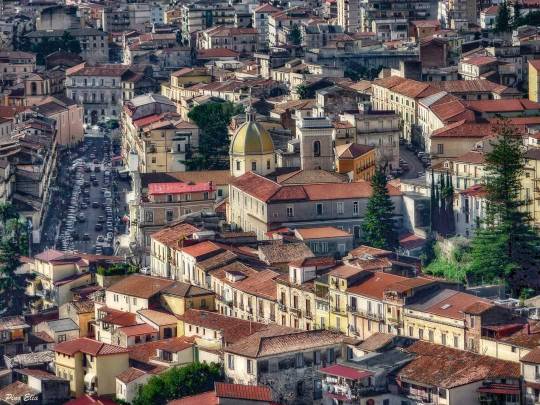
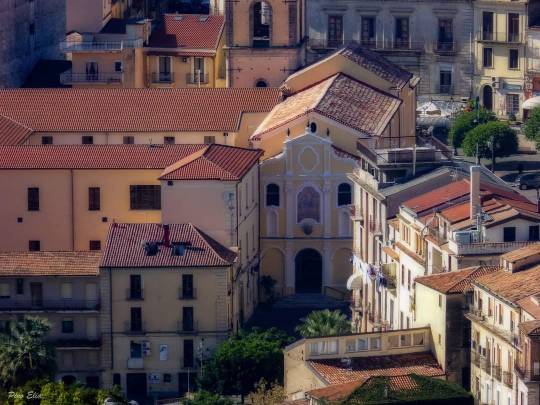



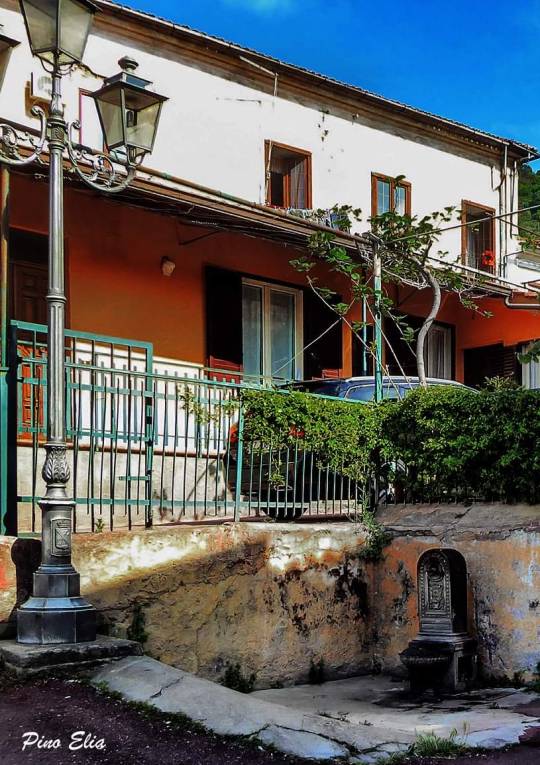

Lamezia Terme, Calabria, Italy
Lamezia Terme is located on the eastern border of the coastal plain commonly called Piana di Sant'Eufemia, which was created by drying a wide marshy area. It is the third largest city in Calabria by number of inhabitants and has a relatively recent history.
Established in 1968 from the fusion of three pre-existing towns: Nicastro, Sambiase, and Sant'Eufemia Lamezia, it is not only an important regional and national hub due to its strategic location in the centre of the region, but also a crucial business hub for the region's economy. These three towns have contributed to the city's diverse cultural heritage and historical significance.
Lamezia Terme is most famous for its international airport which is situated a few kilometres outside the town.
The Baths of Charon

Despite its modern origins, the name is much older: it derives from the first political community attested on this territory, the Lametìnoi, dating back to protohistoric times.
The Baths, on the other hand, refers to one of the main resources of the area, the Terme di Caronte, known since Roman times as Aque Angae. These four springs are located on the slopes of the Reventino mountain massif and, combined with the current of the Bagni river, give rise to different degrees of temperature: the highest reaches 39°C, hence the name Charon.

The secrets of ancient Terina
The first human settlements in what is now modern Lamezia Terme were discovered in 1865, when jewellery was found in the area of Sant'Eufemia Vetere, which was later sold to the British Museum in London, which still preserves it today.
This discovery, known as the Treasure of St Euphemia, was the first in a long series, which during the 20th century confirmed the ancient settlement of Terina. It was not until 1997, however, that it was decided to initiate a systematic search that identified a well-structured urban layout, of which we now know a living quarter built with parallel axes that define a regular urban grid. According to the most widely accepted hypothesis, this would be the extension of a pre-existing structure dating back to the 5th century BC.
Two rooms of the Lametino Archaeological Museum are dedicated to ancient Terina. Lametino Archaeological Museum housed in the Monumental Complex of San Domenico. Divided into three sections: Prehistoric, Classical and Medieval, will give you an insight into the history of this area, from the earliest times. There is, for instance, a hydria, which is a vase, dated between 380 and 370 BC, as well as everyday objects.
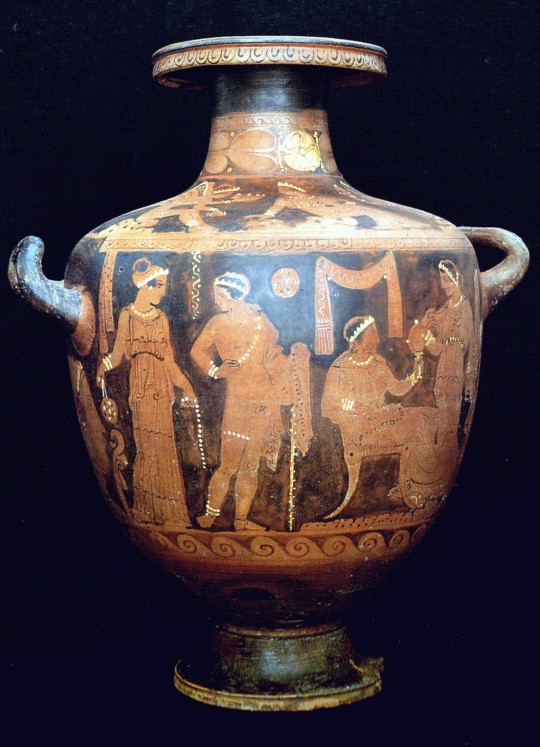
The ruins of the medieval castle
There is still much to discover in Lamezia Terme, especially in the historic city centre. On Hill of San Teodoro, stands the Norman castle of Nicastro about whose origins there is some dispute. Built on the hillside, a unique strategic position to control the surrounding plain all the way to the sea, according to some dates back to Byzantine era, according to others Svevo-Normana.
All that remains of the original structure are four towers, the ramparts, walls and a buttress with a small loggia; the earthquake of 1638 caused great damage to the structure, but at the same time contributed to the legends that populate it.
Photos by Pino Elia
Follow us on Instagram, @calabria_mediterranea
#lamezia terme#calabria#italy#italia#south italy#southern italy#mediterranean#italian#mediterranean sea#seascape#sea#europe#landscape#italian landscape#buildings#cityscape#city#town#architecture#building#people#flowers#lamezia#lameziaterme#history#greek#magna graecia#magna grecia#baths#greek art
34 notes
·
View notes
Text
“The discovery of Tina represents the oldest known case of Down’s syndrome and demonstrates that the diversity observed in modern humans was already present in prehistoric times. This finding ensures that the story of human evolution includes us all.”
20 notes
·
View notes
Text
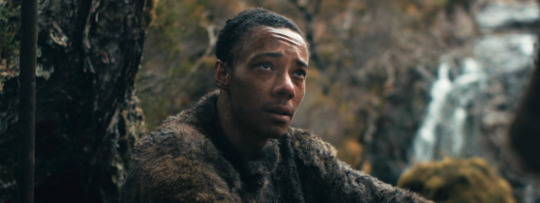


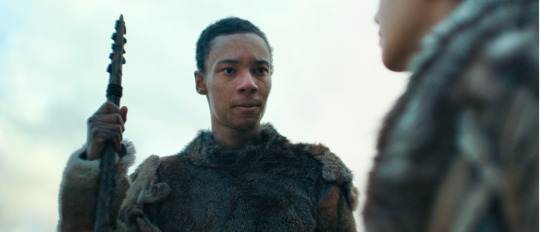
So, I've watched Out of Darkness (2022) starring Mr Kit Young himself. 🎬 🎞
Full disclaimer, I hate horror movies, but I watched it anyway cause Kit (yes, it's a good reason). My verdict is that it's more of a thriller than a horror movie, and to my delight, it didn't rely heavily on jump scares.
It's rare to see movies set in the paleolithic era, and I think that's where the true originality of this movie lies. The costumes and props look overall pretty authentic, up to the stitching of the clothes, which I was happy about. It shows that there had been some anthropological research done beforehand.
The made-up Tola language was such an interesting, fascinating aspect to the movie, and all of the actors sounded exactly as if they had spoken it all their lives. They adopted such unique intonation that I even had a hard time recognizing Kit's voice at first. Acting was incredible, from everyone, and from start to finish.
Also, very glad to see an ethnically diverse group of prehistoric humans. Some recent studies tend to show that paleolithic groups were more complex in terms of origins than we might think. So, props to the casting direction for that.
I also loved how this movie was much more than a slasher and had a true reflexion on what it is, and what it means to be human. The movie was efficient in presenting the characters and their individual motivations. Each of the six main characters represented different angles of human nature : ego, ruthlessness, innocence, kindness, religious zeal, and determination/weakness. I thought it was such a great way to explore that theme.
It's also a beautifully-shot movie, which shows its Scottish Highlands setting in all its gloomy glory : making it both breathtaking and menacing. No green screen in sight, and you can feel the harshness of the elements piercing through the screen.
Overall, I had a good time, but I'm a sensitive creature, and I was still affected by the movie hours after I was done watching it. Much of it has to do with the character played by Kit.
Character analysis and SPOILERS under the cut :
Kit plays Geirr, a young hunter and the most sympathetic character overall. To no one's surprise, Kit plays him with a lot of nuance.
Geirr is a hunter and a warrior by necessity. He's a gentle, sensitive, artistic soul and the stark opposite to his older brother Adem, the leader of the group, who's proud, selfish, and prone to violent outbursts.
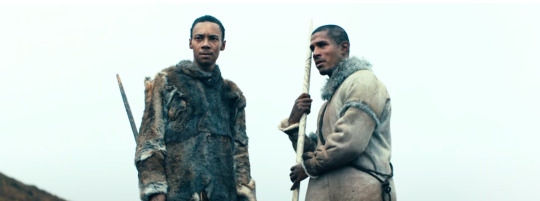
Geirr has a special bond with Beyah, a teenage girl the group picked up "en route". The others still treat her as a stray and an outsider. Geirr, though, accepts her and sees her as being part of their little tribe. He vows to protect and take care of her.
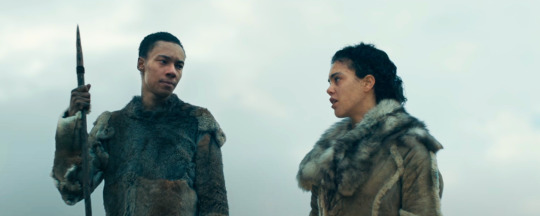
Very few people smile in that movie, but when someone does, it's usually Geirr, and he's smiling at Beyah.

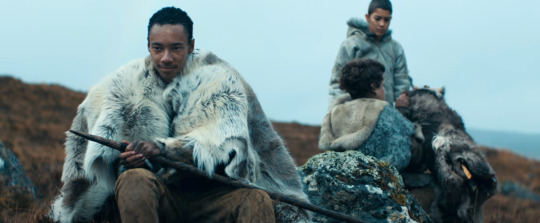
You might think at first that their attachment is a brother-sister or friends type of bond, but something happens that make the viewer understand Geirr's feelings for her extend further than that. While the group is resting after a day of walking the treacherous terrain, Geirr realizes his friend's pants are stained in blood, and he looks alarmed. She's having her first periods ; she's a woman now, and that means leader Adem can get to have a claim on her as he pleases.
Well aware of that fact, Geirr is devastated, and you understand at once that he was hoping to make Beyah his own companion.
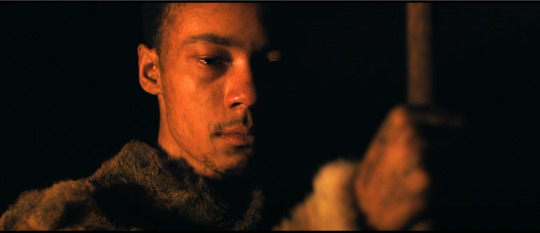
You also understand that he's not going to fight for her. He's going to suffer in silence, accept the situation and accept his brother's authority. Because that's the thing with Geirr ; he's not a fighter. And throughout the movie, Beyah is going to prove that she has a lot more fight in her than he does.
Geirr is someone who has principles, and he's going to follow those principles even when it leads him to suffering or even be at risk of dying. He refuses to kill someone, even out of mercy, or to resort to cannibalism, even when it's the sole way to survive.
By the end of the movie, he has given up, and it becomes clear he's not destined to make it. It makes his death even more devastating, because you're still hoping against hope that he's going to live.

I'm still mourning that sweet prehistoric cinnamon bun, and I blame Kit's acting (and his face) for my emotional turmoil.
49 notes
·
View notes
Text
Conservatives: Facts don’t care about feelings!
facts conservatives ignore because they hurt their feelings:
- The fact that scientific studies on transgender people and their brains supports their validity.
-The fact that biology proves that sex is a spectrum (human knowledge of biology does not end in your 8th grade science class, I’m sorry)
-The fact that homosexuality is extremely common in the natural world. Humans are far from the only species known to experience same-sex attraction.
-The fact that several decades of scientific researched has proven without any doubt that yelling at and hitting children traumatizes them and negatively impacts their development.
- The fact that the most conservative states in america that often ban sex ed from schools have the highest rates of childhood pregnancy in America.
- The fact that intersex people are just as common as redheads and are often negatively effected by transphobia
-The fact that no ethical doctor with more than two brain cells would let a prepubescent child take HRT.
- The fact that pink used to be for boys, but it was changed to blue because Hitler labeled gay holocaust victims with pink triangles. The idea that “blue=boy and pink=girl” is inherently rooted in violent homophobia.
- The fact that statistics show that gender affirming care can increases quality of life for trans people immensely
- The fact that their words and actions have a real world impact that causes tragedies like what happened to Nex Benedict.
-The fact that you can debunk most (if not literally all) republican conspiracy theories with basic research (they just choose to believe it face value because it aligns with their personal feelings)
- The fact that minorities exist in real life, and that it’s actually LESS realistic for every work of fiction to have mostly white, straight, cis people in it. Diversity, when implemented correctly, adds realism to a story. And if you find that “distracting” then you might have some personal biases you need to work through.
- The fact that assuming kids are born with completely man-made gender norms like “Trucks are for boys and unicorn are for girls” hardwired into their brains is absurd and has no real scientific evidence supporting it.
- The fact that many archeological discoveries suggest that prehistoric women were a lot more active in hunting and fighting than was previously assumed.
-The fact that clothing is just an object and that dresses, high heels, and makeup were originally designed for men to wear.
-The fact that drug addiction is classified as a mental illness and should be treated, not punished with years of imprisonment.
-The fact that androgynous men are often considered to be extremely attractive by women.
-The fact that language is an entirely human-made construct that evolves and changes constantly, pronouns included.
-The fact that climate change is a real thing holy shit. You are actively destroying the future for your grandchildren by not believing it exists.
- The fact that many dinosaurs did have feathers, it actually looked cool as fuck, and that if you actually think that an animal is “woke” for having a skin covering you don’t like you might need to have your brain studied by scientists so they can find out what causes “Giant Crybaby Dipshit Disease” (GCDD)
31 notes
·
View notes
Note
Can I ask for a quick run down on what damage ark has done?
ark: survival evolved has countless prehistoric creatures inside of it that are not particularly well known. when people search for information on said critters, ark results are often the first to come up. the way the animals are portrayed in the game, in terms of physical appearance, are extremely inaccurate. designs from the game have been replicated and used by many people, including professionals (such as documentary makers), for their own designs, perpetuating that inaccurate idea. Heck, the Stephen Fry documentary has Ark dinos.
the inaccuracies aren't trivial, when we're depicting prehistoric animals people do not have a frame of reference to compare them to to understand what they were like. If you draw an elephant wrong, people can look up what an elephant looks like, or see one at the zoo. we don't have that for the dead.
Instead, you look up an image, and you see what's on google, which is often yet more inaccurate images. And suddenly, someone has a very skewed and incorrect view of prehistoric life
then on top of that, because the critters ark has aren't well known, sometimes ALL the results on google are just inaccurate depictions from ark
this has real consequences. as a docent, I had just as many people become extremely disappointed when I told them that ARK had it wrong as I did Jurassic World.
why does reality and accuracy matter? well
reality isn't going away, and we have to acknowledge that. you can't just create a new one. we have the one and only reality and its consequences to deal with. see: global warming happening literally right now
the idea that reality can be whatever you want it to be or that opinions matter when it comes to facts is exactly how politicians and other people who desire control manipulate people. see the "fake news" phenomenon
people ignoring reality and how it functions leads to a variety of extremely bad things, including cults, hate groups, and - once again - global fucking warming
as such, anything that makes it seem like reality is more murky than we know - such as filling a google images result section with inaccurate portrayals - makes people question the fact that reality is, actually, unmoveable
in this case, birds being living dinosaurs and dinosaurs being portrayed accurately is extremely important for people to know because it demonstrates that humans are not actually the "main character" of planet earth, and we have to stop acting like it (there is no main character)
why do we have to stop acting like it? well, for one, the extreme amounts of destruction we've caused on this planet. for two, because we can go extinct, we operate under the same rules as all life (one such rule is more diversity = more chances for survival), and we have to stop clowning around and arguing about shit that doesn't matter and actually focus on repairing the harm that we have done to the planet and to each other
so yeah. that's why accuracy in paleomedia matters.
because reality matters.
and reality isn't up for debate.
p. s. I don't care that it's a fictional game that says its fictional, if people are coming to me with misconceptions from a thing and thinking they're real, then that thing has fucked up. end of story. and I had *so many* ark fans come to me at the Field Museum. so many.
371 notes
·
View notes
Text

Borneo is the largest island in Asia, with a rich history and diverse ethnic groups such as Dayak, Malay, Bajau, Kedayan, Banjar, Kadazandusun and many more.
Borneo, a land blessed with wildlife and unparalleled natural beauty as well as abundant natural resources.
At an estimated 130 million years old, Borneo's rainforest is two times as old as the Amazon rainforest in South America.
Evidence for prehistoric human occupation of Borneo has been found at Neah Cave in Sarawak, including fossil bones, stone tools, and wall and ceiling paintings. Borneo is first mentioned in Ptolemy’s Guide to Geography of about 150 CE. Roman trade beads and Indo-Javanese artifacts have been discovered that give evidence of a flourishing civilization dating to the 2nd or 3rd century CE. Three rough foundation stones with an inscription recording a gift to a Brahman priest dated from the early 5th century, found at Kutai, provide evidence of a Hindu kingdom in eastern Kalimantan. Brahmanic and Buddhist images in the Gupta style have been found in the valleys of the Kapuas and other rivers in western Kalimantan. Later Kalimantan rulers were probably feudatories of the Majapahit empire of eastern Java (c. 1293–1520). With the arrival of Islam early in the 16th century, a number of Muslim kingdoms were founded, including the Banjarmasin, Sambas, Sukadana, and Landak. The Sukadana rulers owed allegiance to the Muslim Mataram kingdom of Java.
Modern European knowledge of Borneo dates from travelers who passed through Southeast Asia in the 14th century. The first recorded European visitor was the Franciscan friar Odoric of Pordenone, who visited Talamasim on his way from India to China in 1330. The Portuguese, followed by the Spanish, established trading relations on the island early in the 16th century. At the beginning of the 17th century the Portuguese and Spanish trade monopoly was broken by the Dutch, who, intervening in the affairs of the Muslim kingdoms, succeeded in replacing Mataram influence with their own. The coastal strip along the South China and Sulu seas was long oriented toward the Philippines to the northeast and was often raided by Sulu pirates. British interests, particularly in the north and west, diminished that of the Dutch. The Brunei sultanate was an Islamic kingdom that at one time had controlled the whole island but by the 19th century ruled only in the north and northwest. In 1841 Sarawak was split away on the southwest, becoming an independent kingdom ruled by the Brooke Raj. North Borneo (later Sabah) to the northeast was obtained by a British company to promote trade and suppress piracy, but it was not demarcated until 1912. Those losses left a much-reduced Brunei, which became a British protectorate in 1888.
During World War II the Japanese invasions of Borneo (1941–42) quickly eliminated the token British and Dutch forces on the island, which was not retaken until 1945. In July 1946 both Sarawak and North Borneo were made British crown colonies. In Dutch Borneo a strong nationalist sentiment developed and led to fighting between Indonesian and Dutch forces as the latter attempted to reimpose Netherlands control. Sovereignty passed to the Indonesians in 1949, and in 1950 a new constitution proclaimed Dutch Borneo part of the Republic of Indonesia.
The British government relinquished its sovereignty over Sabah and Sarawak in 1963, when those territories joined the Malaysian federation. That marked the commencement of Indonesian hostilities in the form of guerrilla raids across the border. Those raids ceased by agreement in 1966. Except for the period of Japanese occupation, Brunei remained a British protectorate until 1983. It became fully independent on January 1, 1984.
BORNEO, 1 Island, 3 Countries
8 notes
·
View notes
Note
Genuinely curious about what your favourite type of bird is, so much of the world you have made is referencing them
I REALLY like pigeons and the fancy breeds (only the healthy ones obv), my father has racing pigeons. It breaks my heart how they're called sky rats nowadays when they've been useful to humans since prehistory. Plus they make wonderful pets since they're DOMESTICATED
But in general, its really hard for me to think "That one my favorite ever", i just love birds in general they're so awesome they're dinosaurs that managed to survive to this day which is incredible but we often forget that. Theyre incredibly diverse just cant get enough of them.
and when i say all birds i mean it, even penguins i hate penguins haters you guys have no personality i get it, ill defend penguins forever I've meet too many penguins haters in my life. they're literally birds MADE to swim , do you guys not get how crazy and cool this is
I could say i ADORE owls tho, and sea birds in general, SEAGULLS are amazing theyre so me they're mischief funnies. obviously, every bird of paradise they're just so fancy, it makes me think if we had their skeletons wed never guess their crazy courtship behavior and feather.
It makes me sad when i look at dinosaurs cause we will never know what they did when they were alive, which is also why i love prehistoric planet so much please we need more documentaries that portray them as animals with speculative behavior it's so good i cried of joy
I love other prehistoric birds too, so sad that ill never be able to see a moa raising its youngs 💔
but yeah i like those funny animals
38 notes
·
View notes
Text
A Hundred Some New ATOM Kaiju Pt. 7
On this installment of the unfinished ATOM kaiju showcase, we've got still more aliens for you.
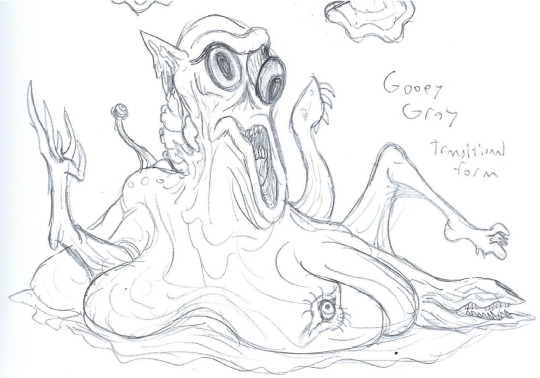

Rosunwell has a bit of a story to it. See, the Beyonder Alliance - i.e. the big coalition of alien invaders on ATOM's setting - creates synthetic organisms tailor-made to new planets they wish to interact with, since most of its citizens don't want to modify their bio-chemistry to adapt to the wildly different environments of other planets, and it's easier to just custom build those foot-on-the-ground explorers anyway. These custom explorers are made from a gray biological sludge of stem cells that's easily molded to resemble native life - hence humans more often than not seeing gray, humanoid aliens when being abducted. Well, during the Beyonder Invasion, one ship was ruptured and leaked out its collection of inert gray sludge, and said sludge got caught between an explosion and a Yamaneon fault line, and thus suddenly became a kaiju.
The sludge slowly figures out what shape it'd like to be, beginning as an amorphous, shifting pile of goo sculpting various alien anatomical features, before finally coalescing into a final form. Rosunwell would be the 100th ATOM Bonus Kaiju File, which would make it the 150th file overall (not including the contest entries), so to be cheeky I made it loosely resemble Mewtwo, the 150th pokemon.



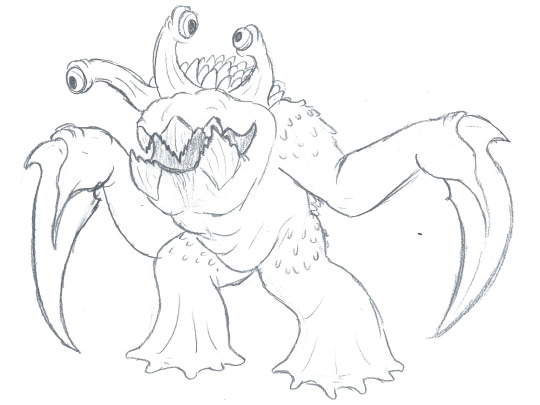
Four more fun Beyonder monsters: a killer clown from outer space, a monster based on a toy batmobile I saw that looked kinda loke a monster head, a spider-like alien that takes more than a bit after Venom and Spider-Man (pretty proud of the name "Galachnid"), and a three-eyed goober.

In the past I designed more Venusian monsters than Karamtor, and while most of them remain abandoned, I guess I had a soft spot for Vrank, the living tank monster, so I gave it another go.
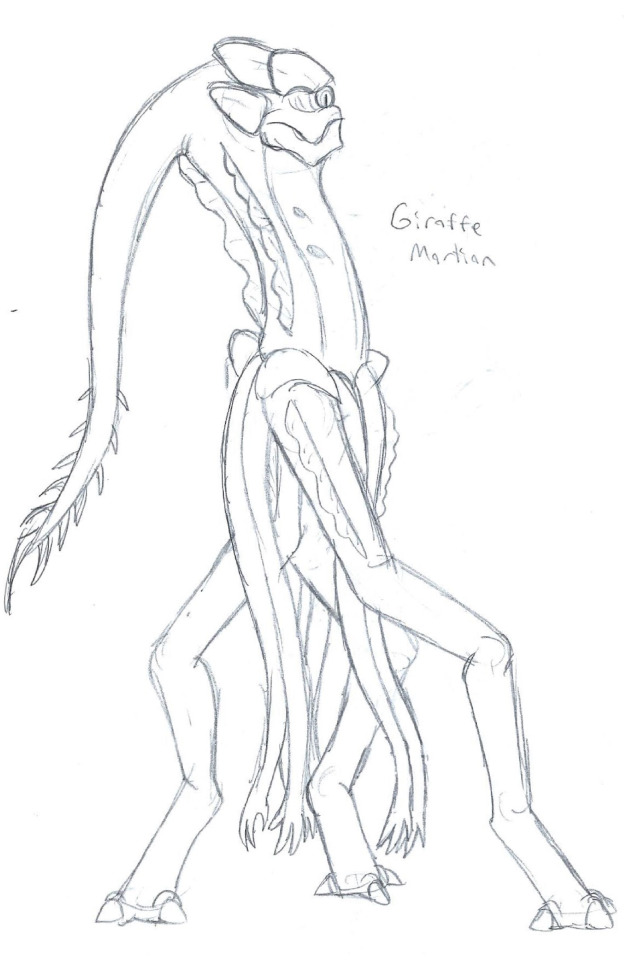

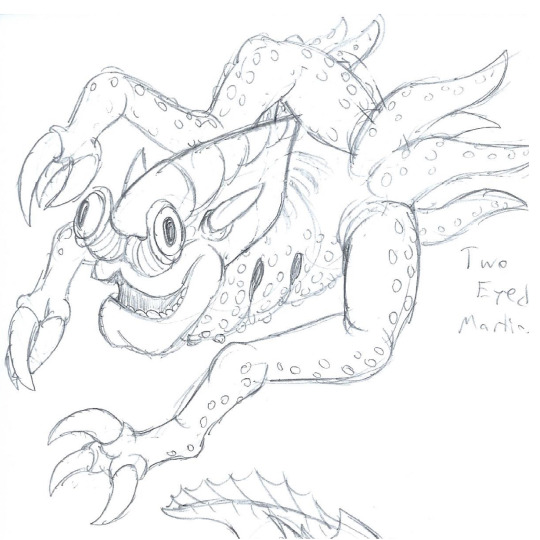
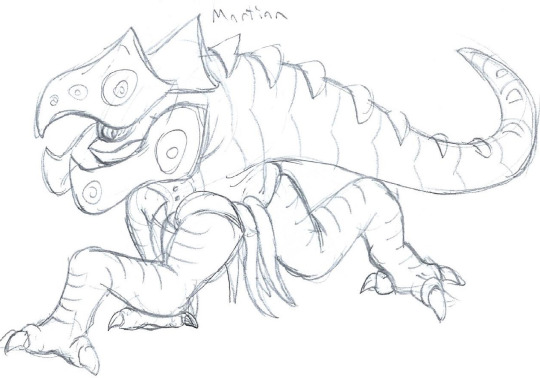
To finish this batch, we have four martian monsters that would feature in a story about the prehistoric war between the Martians and the Beyonder Alliance - four comrades of Kemlasulla and pals. They're all exercises in taking Kemlasulla's body plan in strange directions, just as Earth has spun the tetrapod body plan into a multitude of very different beasts. I think they may still be too similar to Kemlasulla to really reach the diversity I wanted, but then maybe I only think that because I'm looking at them with earthling tetrapod eyes.
17 notes
·
View notes